The city’s story unfolds like the pages of a timeless novel, each cobblestone street whispering secrets of its past. Over millennia, Lisbon has borne witness to the rise and fall of civilizations, from Phoenician origins to Roman conquests, Moorish rule, and the Age of Discovery. Its ancient foundations have absorbed the diverse cultural tapestry woven by successive generations. Lisbon’s skyline is an open-air museum, displaying architectural marvels that reflect the tapestry of influences that have shaped it. Gothic cathedrals stand tall, their spires reaching towards the heavens, while Moorish fortresses evoke an era of intricate tilework and ornate arches. Elegant Baroque facades and neoclassical structures further enrich the city’s architectural panorama, testament to the various epochs that have left their indelible mark. Strolling through Lisbon’s labyrinthine alleys, one can sense the echoes of time, where fado music, the melancholic soul of Portugal, emanates from cozy taverns. The aroma of freshly baked pastéis de nata, custard tarts that have become emblematic of the city, mingles with the salty tang of the sea breeze, providing a sensory immersion into Lisbon’s essence. The city’s position on the edge of the Atlantic Ocean is no mere coincidence. It is a strategic crossroads where maritime explorers like Vasco da Gama and Ferdinand Magellan embarked on epic voyages that would forever alter the course of history. The Tagus River, flowing majestically through the heart of Lisbon, has borne witness to countless departures and triumphant returns, carrying within tales of distant lands and newfound treasures.
Today, Lisbon stands as a testament to the enduring spirit of a city that has weathered the tides of time. Modernity gracefully interlaces with tradition, and innovation breathes new life into its historic quarters. The bustling metropolis embraces the future while cradling its past, ensuring that the legacy of this ancient capital endures, captivating visitors from every corner of the globe with its timeless allure. Lisbon, a living testament to the resilience and beauty born from centuries of cultural exchange and historical resonance.
Lisbon Monuments of Historical Significance
Belém Tower (Torre de Belém). Belém Tower, an exquisite testament to Portugal’s golden age of exploration, rises majestically at the confluence of the Tagus River and the boundless Atlantic. Crafted with meticulous care in the early 16th century, this architectural jewel emerged as both a formidable fortress and an emblematic ceremonial gateway. Its purpose was twofold: to safeguard the realm from potential threats and to announce Portugal’s mastery of the seas to all who approached its shores.The tower’s facade is a masterwork of the Manueline style, a uniquely Portuguese blend of Gothic, Moorish, and Renaissance elements. Its intricacies unfurl like an ancient maritime chart, an artistic tapestry woven with delicate lacework of stone. Nautical motifs dance across the stonework, paying homage to the nation’s seafaring legacy. Dolphins, sea monsters, and coils of rope intertwine, a vivid tribute to the daring explorers who charted new worlds and the intrepid sailors who plied the oceans in their wake.
As one steps within, the air is imbued with a palpable sense of history. The cool stone walls, bearing the marks of centuries, echo with the whispers of time. Narrow passages and chambers, once bustling with the movements of soldiers and sailors, now echo with the footsteps of curious visitors. The ascent through the tower’s spiraling staircases offers a voyage through the ages, culminating in a breathtaking panorama that unfolds from the tower’s pinnacle. From this vantage point, the vista is nothing short of awe-inspiring. The Tagus River, expansive and shimmering, stretches into the distance, carrying the echo of countless stories on its gentle waves. To the west, the Atlantic horizon stretches to infinity, a reminder of the boundless possibilities that once called to intrepid explorers. To the east, the city of Lisbon spreads its tapestry, a modern metropolis that grew from the seeds sown by those who dared to venture into the unknown. Belém Tower stands as a sentinel, a silent witness to the ebb and flow of history. It is a testament to the audacity of the Age of Discovery, a legacy of Portugal’s maritime prowess, and an enduring symbol of the indomitable human spirit. It beckons visitors to stand in its shadow, to trace the contours of its ancient stones, and to imagine the echoes of a bygone era when the world was vast and full of promise, and the sea held the key to unlocking its mysteries.
Largo do Carmo. Largo do Carmo, cradled within the embrace of Lisbon’s storied Chiado district, is a captivating time capsule nestled amidst the cobbled streets and ancient facades. This picturesque square breathes with the echoes of centuries, each cobblestone whispering tales of a bygone era. At its heart stands the haunting silhouette of the Carmo Convent, a solemn sentinel to the cataclysmic events of 1755.The Carmo Convent, though a mere shadow of its former grandeur, evokes a profound sense of awe. Its skeletal arches, reaching skyward like ancient sentinels, bear witness to the unforgiving power of nature. The earthquake’s wrath may have left its mark, but the spirit of resilience endures. The remaining walls and vaulted nave stand in stark contrast to the modernity that surrounds them, a poignant testament to the inexorable passage of time.In this square, history unfolds in layers, where the Carmo Convent’s remnants share a dance with the vivacious energy of the cityscape. The juxtaposition of ancient stones and contemporary life creates a captivating tableau, a testament to Lisbon’s ability to embrace both its past and present with grace.The Carmo Archaeological Museum, an intellectual treasure trove within this historic enclave, opens a portal to bygone epochs. Here, artifacts spanning millennia find their sanctuary, weaving a narrative that stretches from ancient civilizations to the vibrant tapestry of Lisbon’s own evolution. Each relic, meticulously preserved, carries whispers of forgotten stories, inviting visitors to step back in time and unravel the mysteries of days long past.As sunlight filters through the arches, casting dappled patterns on the ground, Largo do Carmo stands as a living testament to the resilience of a city that has weathered the tempests of time. It invites contemplation, encouraging one to reflect on the passage of centuries and the indomitable spirit that thrives amidst the echoes of history. This square, a convergence of antiquity and modernity, beckons travelers and locals alike to partake in the rich tapestry of Lisbon’s narrative, to stand amidst the ruins and imagine the vibrant life that once pulsed through its ancient stones.
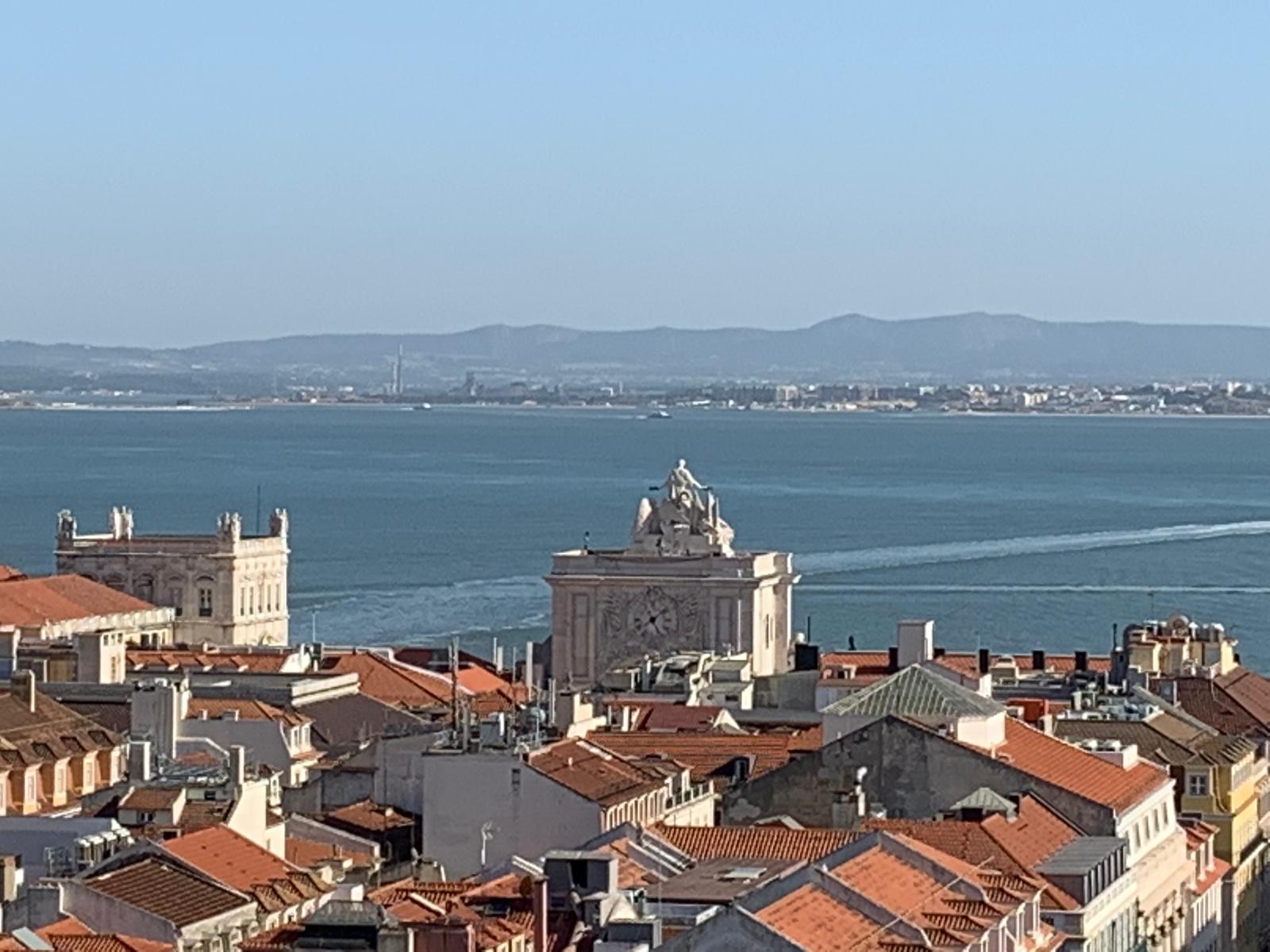
Portugal’s Monument To Overseas Combatants (Monumento aos Combatentes do Ultramar) stands as a solemn sentinel in the heart of Eduardo VII Park, bearing witness to a chapter of Portugal’s history that is both somber and deeply significant. It is a tribute, etched in stone and spirit, to the courageous souls who bore the weight of Portugal’s colonial wars.At the heart of this hallowed ground stands “The Unknown Soldier,” a sculpture that embodies the essence of sacrifice and valor. Its form, stoic and resolute, represents the countless heroes whose names may never be known but whose contributions are eternally felt. The figure gazes into the horizon, a symbol of the unwavering commitment to a cause greater than oneself.Surrounding this central sentinel, a series of evocative reliefs unfold a narrative of struggle, resilience, and unwavering determination. These masterfully crafted scenes depict the theater of combat, where soldiers faced the crucible of adversity with indomitable spirit. Each relief is a canvas of emotion, capturing moments of camaraderie, fortitude, and the unbreakable human spirit in the face of hardship.The tranquility that envelops this monument offers a sanctuary for reflection. It is a space where the whispers of leaves in the wind and the distant sounds of the city serve as a backdrop for contemplation. Here, visitors are invited to stand in the presence of history, to honor the sacrifices made in the pursuit of freedom and independence.
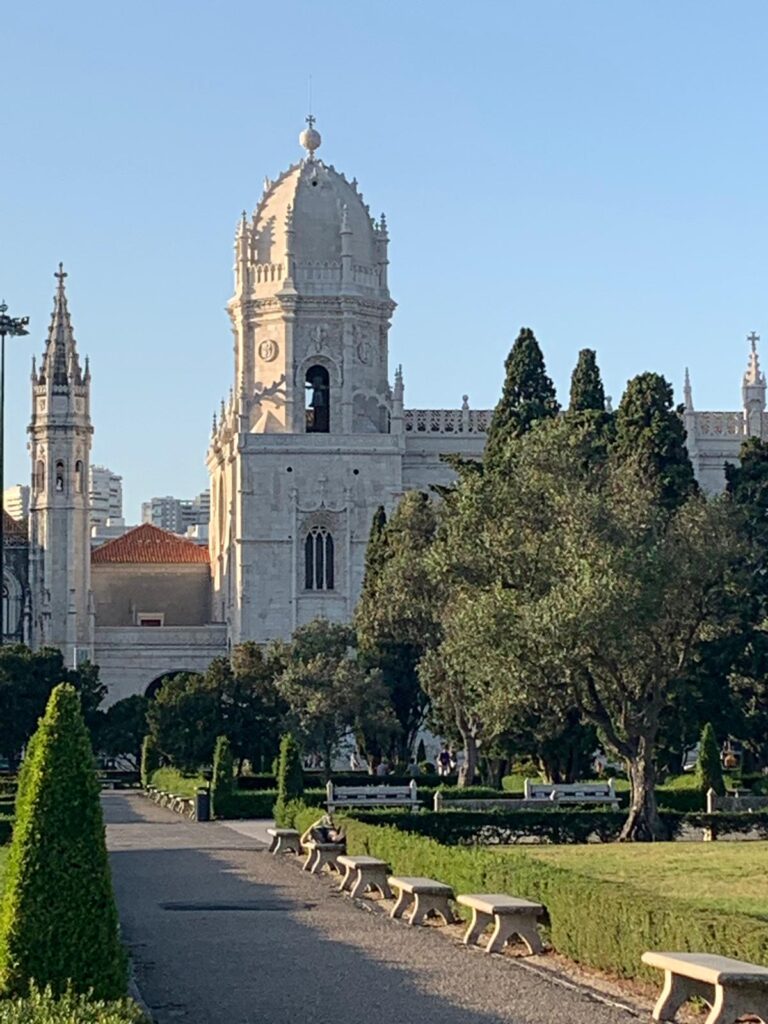
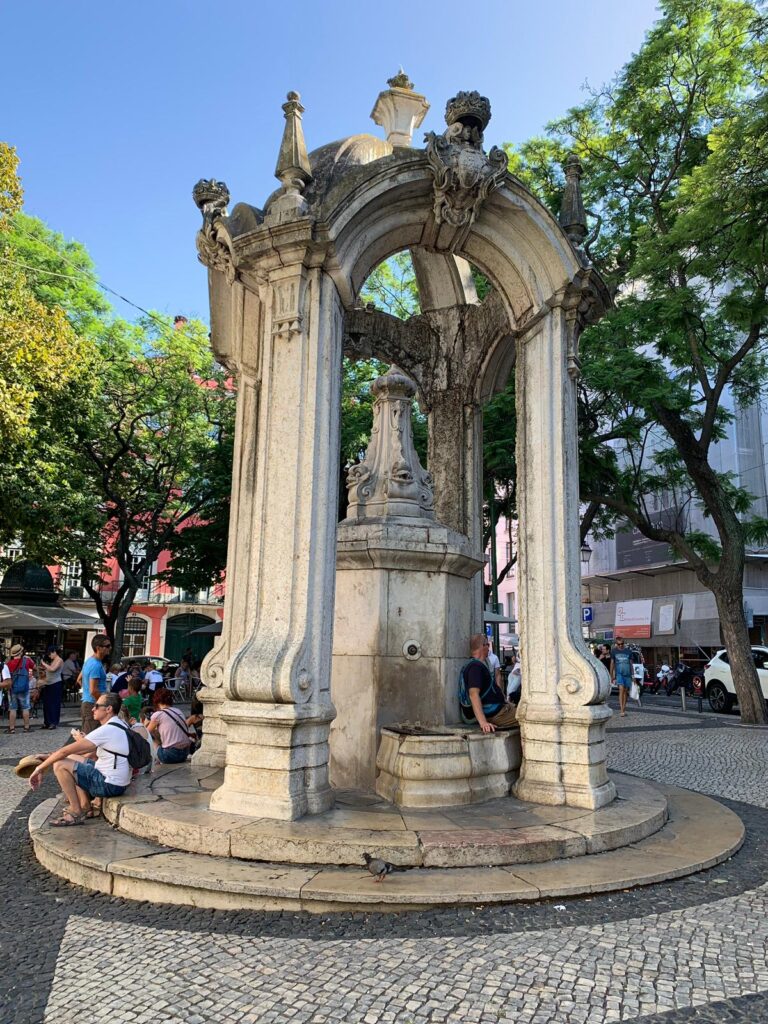
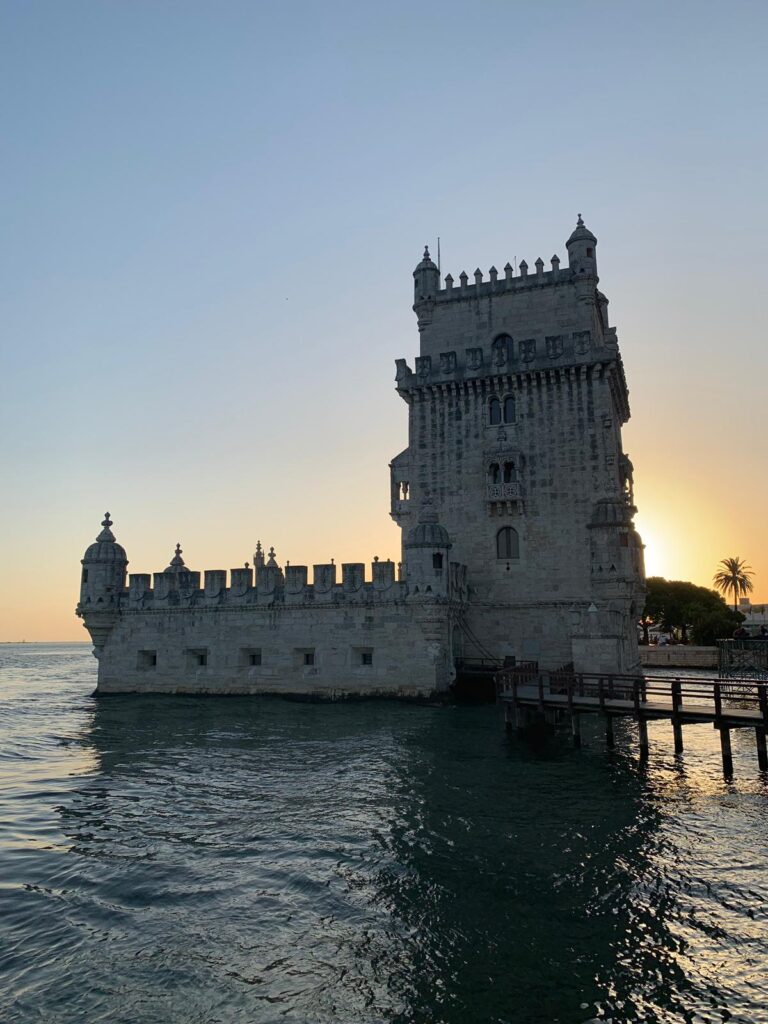

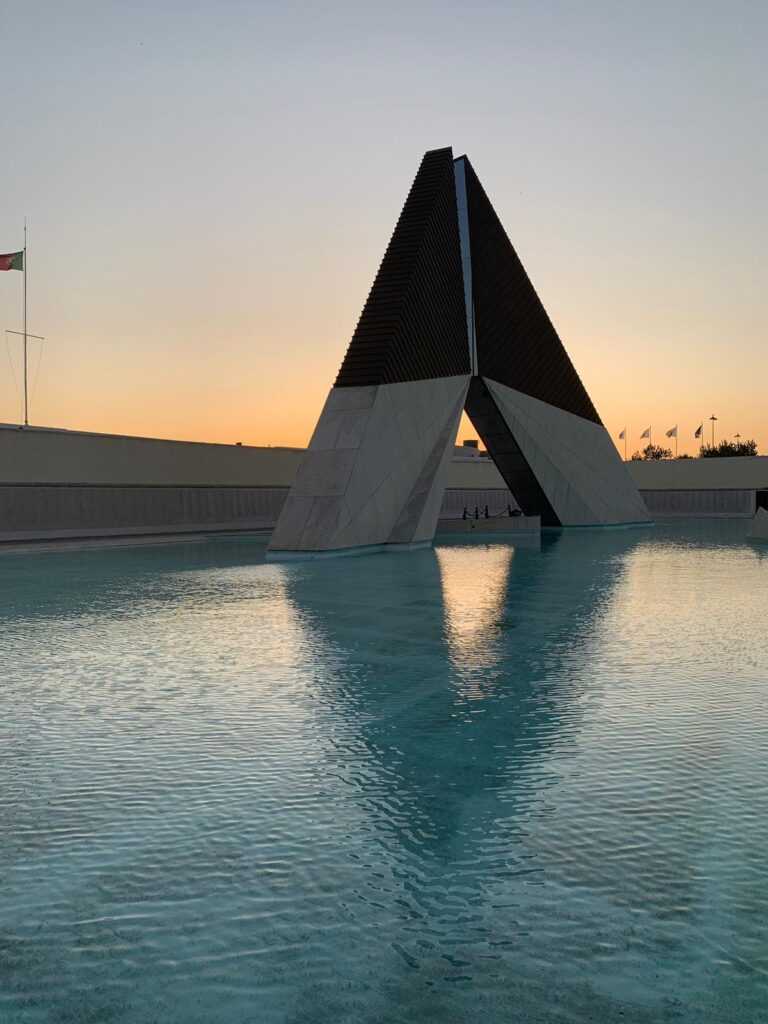
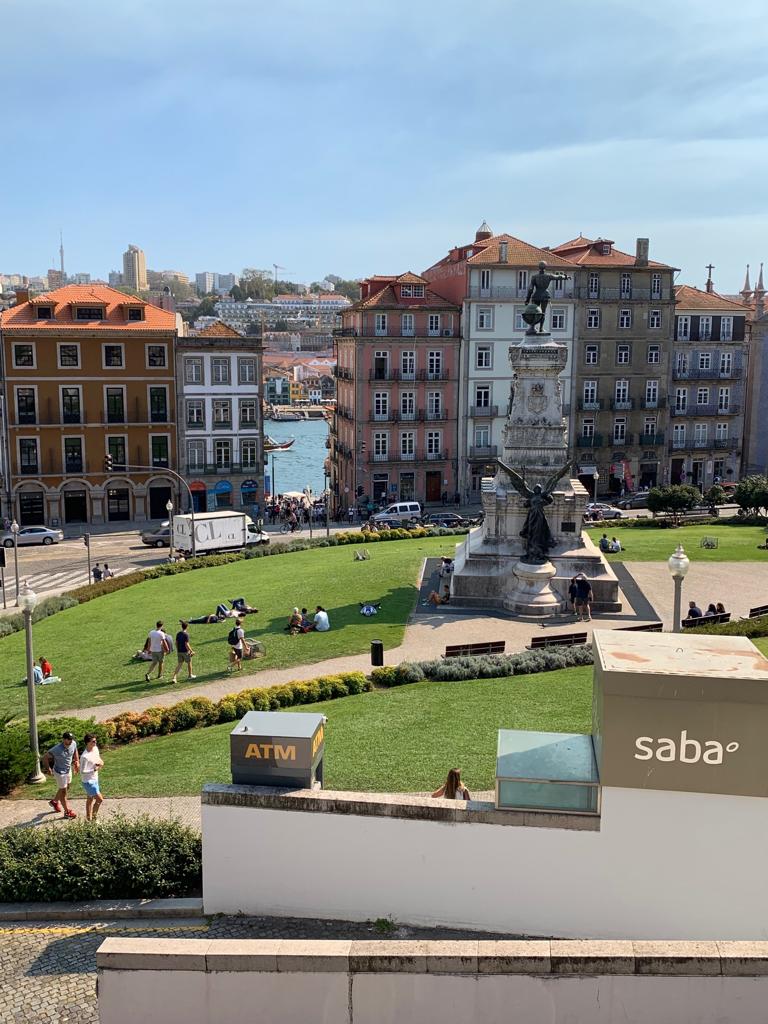
Jerónimos Monastery (Mosteiro dos Jerónimos). The Jerónimos Monastery, an awe-inspiring marvel of architectural brilliance, proudly dons the distinguished title of a UNESCO World Heritage Site. Erected in the 16th century, it stands as an enduring testament to the zenith of Portugal’s Age of Discovery, a period that saw the nation rise to unprecedented maritime prominence.As one approaches the monastery, the façade is a symphony of intricately carved stone, a gallery of artistry etched into the very bones of the structure. Delicate filigree motifs, maritime emblems, and botanical wonders intertwine in a breathtaking display of craftsmanship. Every chisel mark bears witness to the dedication and skill of the artisans of that illustrious era, leaving an indelible mark on the walls of history.Stepping into the heart of the monastery reveals a sanctuary of grandeur and spiritual resonance. The cloister, a masterpiece in its own right, unfolds with graceful arches and elegantly carved columns, each corner a testament to the harmonious fusion of form and function. Light filters through stone filigree, casting an enchanting dance of shadows, as if whispering secrets of centuries long past.
The tomb of Vasco da Gama, the legendary explorer who charted a historic route to India, lies within these hallowed walls. It is a place of pilgrimage for those drawn to the maritime lore of Portugal. The air seems to reverberate with the echoes of da Gama’s journeys, carrying with it the scent of far-off shores and the promise of uncharted territories. Adjacent to the monastery, the Church of Santa Maria offers a spiritual counterpart to its secular sibling. Within these sacred confines, lies the final resting place of Luís de Camões, Portugal’s immortal poet. The verses that flowed from Camões’ pen, encapsulating the soul and spirit of the nation, find a fitting abode within this sanctuary of worship.
The Jerónimos Monastery, with its resplendent façade, intricate carvings, and sanctified chambers, stands not only as an architectural marvel but as a living testament to the indomitable spirit of a nation. It encapsulates an era when Portugal’s sails unfurled to the farthest reaches of the globe, leaving an indelible mark on the course of human history. In its hallowed halls, the past and present entwine, inviting all who enter to be enveloped in the legacy of a nation’s audacious dreams and unwavering resolve.
Padrão dos Descobrimentos (Monument to the Discoveries). The Padrão dos Descobrimentos, a commanding presence along the riverbanks, stands tall as a testament to the indomitable spirit of Portugal’s Age of Exploration. This colossal edifice, a tribute to the intrepid explorers, navigators, and visionaries who charted uncharted territories, juts out majestically over the Tagus River, its form echoing the proud silhouette of a caravel, the stalwart vessel of the era.Ascending the monument’s grand staircase is akin to embarking on a voyage through time. Each step leads to an elevated perspective that unravels a breathtaking panorama. To the west, the Tagus River stretches infinitely, its waters glistening under the sun’s embrace. To the east, the city of Lisbon unfolds in a mosaic of ancient facades and modern spires, a living testament to the passage of centuries.The façade of the Padrão dos Descobrimentos is a canvas of intricate carvings, a gallery of the heroes and heroines who dared to dream beyond the horizon. A cavalcade of historical figures, from Prince Henry the Navigator to Vasco da Gama, are immortalized in stone, their features etched with painstaking detail. Each visage exudes the determination and audacity that defined the Age of Exploration, an epoch that forged new pathways to distant shores. This monumental structure is more than stone and mortar; it is a living testament to human ambition, to the insatiable thirst for knowledge and discovery. It is a beacon, not only for Lisbon and Portugal, but for the entire world. The Padrão dos Descobrimentos stands as a bridge between epochs, an embodiment of the audacious spirit that propels humanity forward, ever in search of new frontiers and boundless opportunities.
Lisbon, Portugal, is a city where history, culture, and architecture converge in a mesmerizing tapestry. From the ancient foundations to the towering monuments, each site narrates a chapter of the city’s storied past. These landmarks stand as testaments to Lisbon’s enduring spirit and its profound impact on the world stage. Exploring these monuments is not just a journey through time, but an immersion in the legacy of a city that has shaped the course of history.






